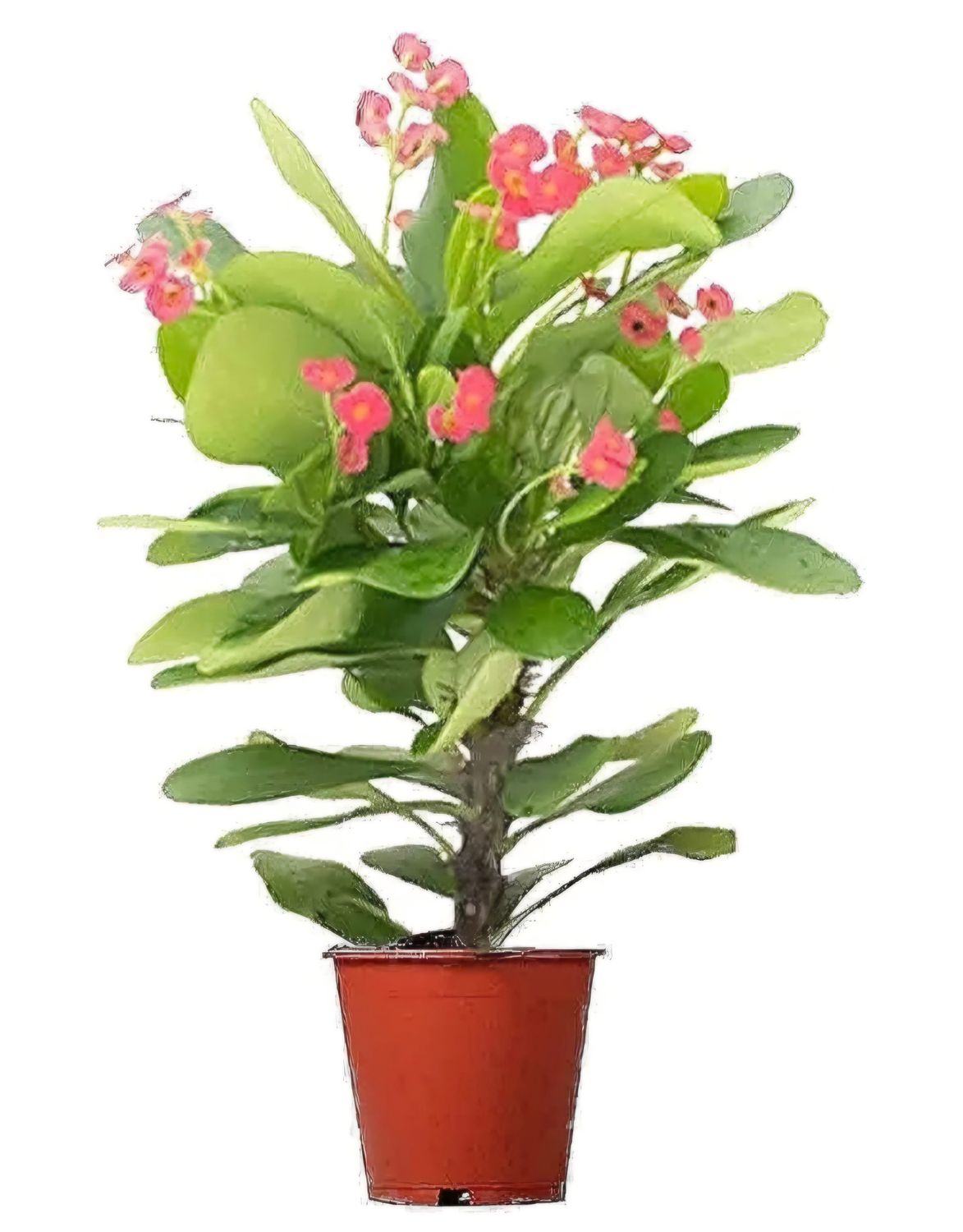Euphorbia Plant
Aed 20.00
In stock
1
Product Details
Euphorbias are striking additions to plant collections but demand careful handling due to their toxic sap. With proper care, they reward growers with year-round interest and resilience. 🌵✨
Euphorbia Plant Overview
Euphorbia is a vast and diverse genus of plants in the family Euphorbiaceae, comprising over 2,000 species ranging from succulents and cacti-like forms to shrubs, trees, and herbaceous plants. Known for their adaptability, Euphorbias thrive in varied climates, from deserts to tropical regions. Popular species include the holiday favorite Poinsettia (Euphorbia pulcherrima), the spiny Crown of Thorns (Euphorbia milii), and the sculptural African Milk Tree (Euphorbia trigona).
Key Characteristics
- Latex Sap: All Euphorbias produce a milky, toxic latex when damaged. This sap can cause skin irritation, eye damage, or gastrointestinal distress if ingested.
- Unique Flowers: Their flowers, called cyathia, are small, cup-shaped structures often surrounded by colorful bracts (e.g., Poinsettia’s red leaves).
- Morphological Diversity: Some species resemble cacti (e.g., Euphorbia obesa), while others are leafy or thorny.
Popular Species
- Poinsettia (E. pulcherrima): Famous for red bracts during winter holidays.
- Crown of Thorns (E. milii): Thorny succulent with bright flowers.
- Pencil Cactus (E. tirucalli): Slender, green stems; grows rapidly.
- Euphorbia trigona: Architectural succulent with triangular stems.
Care Tips
- Light: Most prefer bright, indirect light (succulent types tolerate direct sun).
- Water:
- Succulents: Water sparingly; let soil dry completely between waterings.
- Non-succulents: Keep soil slightly moist but well-drained.
- Soil: Use well-draining mixes (e.g., cactus/succulent soil with perlite).
- Temperature: Warm climates (60–85°F or 15–29°C). Protect from frost.
Uses
- Ornamental: Prized for unique shapes and drought tolerance in gardens or as houseplants.
- Traditional Medicine: Some species used cautiously in folk remedies (e.g., Euphorbia hirta for respiratory issues).
- Caution: Avoid planting invasive species (e.g., Euphorbia esula) in open landscapes.
Propagation
- Cuttings: Take stem cuttings, let them callous for 1–3 days to seal latex, then plant in well-draining soil.
- Seeds: Some species can be grown from seed, though germination may be slow.
- Safety: Wear gloves and eye protection when handling sap.
Toxicity
- Highly toxic to humans and pets. Ingestion causes nausea, vomiting, or diarrhea.
- Sap contact may lead to skin rashes or eye irritation. Keep away from children and animals.
Common Issues
- Overwatering: Leads to root rot (yellow leaves, mushy stems).
- Pests: Susceptible to mealybugs, spider mites, and scale. Treat with neem oil or insecticidal soap.
- Leggy Growth: Insufficient light; move to a brighter location.
Save this product for later
Euphorbia Plant
Display prices in:AED

